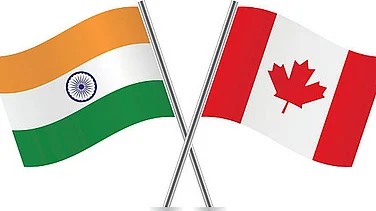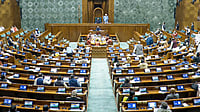
The world awaits the US Supreme Court’s decision on the Trump administration’s tariff policies, which could reshape US trade law and global markets.
The case tests whether Trump overstepped federal authority under the International Emergency Economic Powers Act (IEEPA) by imposing reciprocal tariffs.
A ruling against Trump could invalidate many of his trade measures, while a favorable verdict would strengthen presidential power in foreign economic policy.
The world awaits the US Supreme Court judgement on the Trump administration’s tariff policies this Wednesday. The Trump administration heads to the court facing small businesses and a group of states who dissent most of the reciprocal tariffs the administration has imposed and allege that they are illegal and should be struck down. On Wednesday, the court will decide whether he has overstepped federal law with many of his tariffs. If the court rules against him, it would upend most of the trade policies, including his sweeping reciprocal tariffs he announced in April.
US President Donald Trump has used tariffs not just as his economic diplomacy but also as a crucial element in his foreign policy. He has imposed tariffs that are aggressively high against trading partners and pushed the world to the brink of a global trade war.
Trump’s Efforts in Making America Great Again
Trump has repetitively expressed his agitation and anxiety about making America great again by bringing, or rather forcing, companies to set up manufacturing hubs in the US and by raising tariffs, which Trump calls disproportionate and unfair duties on US exports.
Trump considers the US court’s ruling one of the most important in the history of the US. According to media reports, he said it would be a “disaster” for the US if the justices fail to overturn lower court rulings that found he went too far in using an emergency power law to put his tariffs in place. In their defence, the Justice Department has argued that the trade tariffs are “part of his foreign affairs, an area where the courts should not second-guess the president.”
On Sunday, the president said he will not attend the hearing in person as he did not want to cause a distraction. “I wanted to go so badly... I just don't want to do anything to deflect the importance of that decision,” he said. “It's not about me, it's about our country.”
The Battle Between Executive and Judiciary
Earlier this year, two lower courts and most judges on the US Court of Appeals for the Federal Circuit found that Trump did not have power under the International Emergency Economic Powers Act (IEEPA) to set tariffs. However, some contested that the 1977 law allows the president to regulate imports during emergencies without specific limitations. “The fact of the matter is that President Trump has acted lawfully by using the tariff powers granted to him by Congress in IEEPA to deal with national emergencies and to safeguard our national security and economy,” White House spokesman Kush Desai said in a statement. “We look forward to ultimate victory on this matter with the Supreme Court.”
What Happens Next?
The White House states that if it loses, it will impose duties via other means, such as laws allowing the president to put tariffs of up to 15% in place for 150 days. So far, there have been no clear signs of how the court will rule. According to a BBC report, the nine justices, six of whom were appointed by Republicans, including three by Trump, have shown deference to this president in other recent disputes and historically have given leeway to the White House on questions of national security.




























